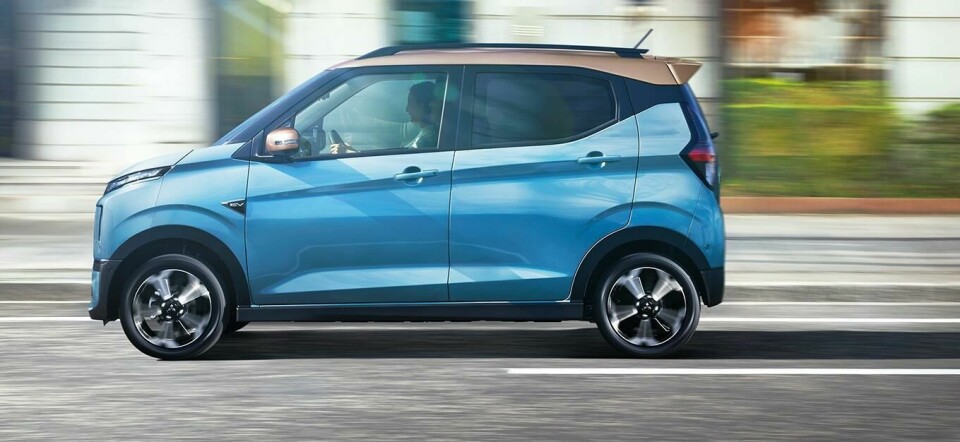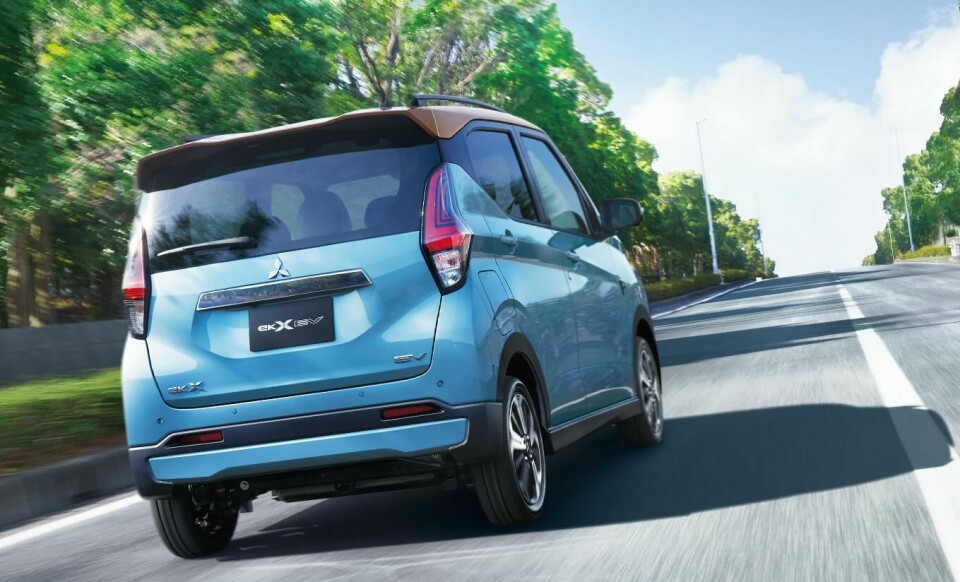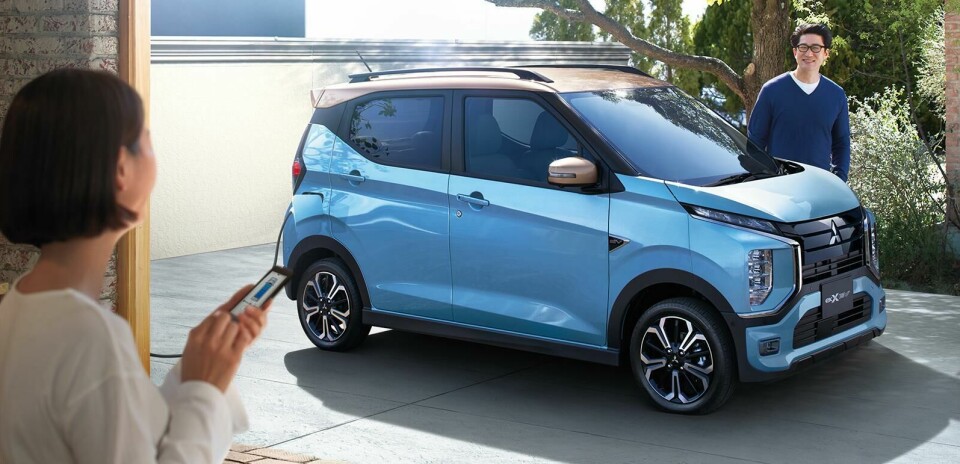
Mitsubishi models tiny EV on much larger cousins
Mitsubishi’s design team tells Car Design News how its new electric ‘Kei car’ drew inspiration from vehicles twice its size
It’s the season for revivals, with various automakers relaunching iconic and innovative models that, for one reason or another, were eventually phased out.
The DeLorean Alpha5 will succeed the DMC-12 of the 1980s; Renault is readying a new, more refined version of its Scenic people carrier; and in Japan, Mitsubishi has launched the de facto successor to its tiny electric city car, the i-MiEV.

Launched in June, the eK X EV was borne from a joint venture with Nissan alongside the Sakura which shares the same platform. Nissan’s program design director, Nobutaka Tase, recently explained how his team “abandoned conventional concepts” when it came to crafting the Sakura. To learn more about Mitsubishi’s approach, Car Design News caught up with the designers behind the eK X EV.
While the eK X (pronounced cross) has been available in Japan for some time as an ICE-powered version, the launch of an electric variant plugs that gap left by the i-MiEV, which was gradually phased out in North America, Europe and most recently Japan. This is more than just a casual observation. Speaking to CDN, Mitsubishi’s design team explicitly described the new model as “the rebirth” of the now discontinued i-MiEV.
Officially a ‘Kei’ car, the eK X EV is diminutive by design. Kei cars rose to prominence as part of a decades-old government initiative to maximise increasingly limited road and parking space. Smaller cars also generate fewer tailpipe emissions and require less energy to make in general. Kei cars are all about efficiency.

But a Kei car presents something of a challenge to designers as width limitations mean they naturally run the risk of looking tall and narrow. There is no change on that front – at 1,475mm wide and 1,655mm tall, the eK X EV is both of these things – but clever angles and styling tricks help to conceal its awkward proportions.
“With the restrictions on overall width, we adopted a wedged design throughout the side view to show a dynamic movement, which is the same design language as the Eclipse Cross,” the team explained. “We also blacked out the A and D pillars to separate the roof from the body, giving it a sporty appearance while eliminating the sense of instability that can be caused by the large cabin looking too tall.”
By deeply sculpting the surface under the shoulder line, we were able to create a dynamic rear fender that stands out
To balance things out, the design team borrowed techniques used with larger cars in its portfolio to create more of a ‘dynamic’ silhouette. “We emphasised the body’s contrast by deepening the sculpted surface within the limited dimensions. This is a technique that is also adopted for the Eclipse Cross and the all-new Outlander,” they explained. “Specifically, by deeply sculpting the surface under the shoulder line, we were able to create a dynamic rear fender surface that stands out.”
As a result, there is a fluency in design that carries over from other models. It is very clearly a Mitsubishi. The large chrome front grille and gaping side grilles on the lower mask are familiar traits, for example, and underpin Mitsubishi’s Dynamic Shield design. The result is a snub-nosed, boxy Eclipse Cross lookalike that is less ‘cute’ and more ‘rugged’– a descriptor rarely levelled at any Kei car.

Mitsubishi says the eK X EV has “inherited the DNA” of the new Outlander too, which “expresses a sense of protection and performance.” In addition, those dual-tier headlights –with a signature light in the upper mask and main headlight in the lower mask – are inspired by its much larger cousins. Unlike the ICE version of this Kei car, the upper grille has been changed to dark chrome with a larger, cleaner surface. The team says this adds ‘sophistication’ that tempers the tough look of the front end. An ‘EV’ badge on the front fenders make clear that this is part of the brand’s electrified family.
Could this mark a resurgence of the Kei car category in general – now in EV form? Mitsubishi certainly seems to think so, citing greater awareness of a vehicle’s carbon footprint and an appetite for compact EVs. This is certainly true of its home marketin Japan, and to a growing extent in Europe, where the Citroen Ami is spearheading a similar movement toward dinky, plug-in city cars. Design teams will be hard pressed to turn challenging proportions into alluring designs.



